How Much More Are Movie Stars Making Today?
How Much More Are Movie Stars Making Today?
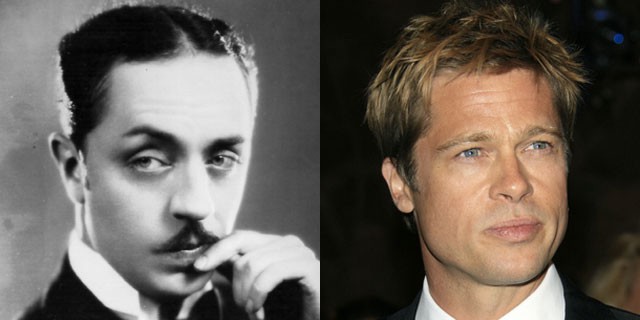
We all know that our movie stars are not only a precious natural resource, but also a group of individuals that are very highly compensated, not just now, but even back then, when we were just figuring out what to call them (moving picture heroes? Lumièronauts?). We also all know that this compensation has increased as the years tick by and the Oscars are doled out. But do we know exactly by how much?
It’s not a question that’s entirely straightforward. For example, the answer to the trivia question, “Who was the first actor to get paid a million dollars for a single movie?” is a surprisingly hard one to answer. The game show answer would be William Holden for The Bridge On The River Kwai in 1957 (and, on the actress side, Elizabeth Taylor for Cleopatra in 1963). But not so fast. Holden made a million dollars off the film, but actually his upfront compensation was less than $500,000, as his agent negotiated a deal where Holden would get ten percent of the film’s profits. And as such arrangements go, how much did Mary Pickford, Douglas Fairbanks, Charlie Chaplin and (non-actor) D.W. Griffith make after they formed United Artists in 1919, as they produced and distributed a number of films that grossed over a million dollars at the time. They owned the means of production, and were surely making serious bank, not just as actors but also as distributors.
And for that matter, is it fair to compare a million dollars in 1919 to a million dollars in 1957? Or even 1957 to 1963? “Who is William Holden?” might take the square on “Jeopardy,” but it also might not be correct.
BRAD PITT
As a baseline, let’s use Brad Pitt, currently appearing in critical pick Moneyball. Pitt has been around for a while, and his ascent to stardom was steep, initially attracting close attention as the abs in Thelma and Louise in 1991, jetting straight to above the title in short order. This is common knowledge, and Brad Pitt has as household of a name as they come for coming on 20 years, and a favorite topic of the gossip industrial complex. But just how much money does Shawnee, Oklahoma’s William Bradley Pitt actually make? To the Internet!
Do keep in mind that an actor’s salary is not necessarily a matter of public record. Movie-making in not like professional sports, where paycheck size is disclosed as a matter of course. It makes sense: how much do you make a year, and how likely are you to answer that question in a public forum? On top of that, generally speaking, the size of a budget of a motion picture falls under the category of trade secret, as competing studios don’t exactly what to advertise how much money they are (or aren’t) making to competitors.
On the other hand, some salaries are bandied about like catchphrases. Take the
$20 million dollar club, which is the recent standard for the highest echelon of movie stars, including Tom Hanks, Julia Roberts, Jim Carrey, Harrison Ford and Johnny Depp. Why advertise such an obscene take-home? Answer: So that the actor is viewed as someone who must be paid that much for the next film.
In Pitt’s case, according to IMDB, Pitt’s reps fall on the side of building precedent by releasing (usually through sub rosa means) some of his paydays. Pitt made his first serious bank in 1993, turning his hot guy charm into menacing hot guy for Kalifornia for $500,000. His menacing maybe-imaginary hot guy reprise in 1999 Fight Club made him $17,500,000. And in 2005 he joined the $20 million club for the film he made with Mrs. Pitt, Mr. & Mrs. Smith. By any standard other than a hedge fund manager’s, Brad Pitt gets paid a lot of money.
MARILYN MONROE
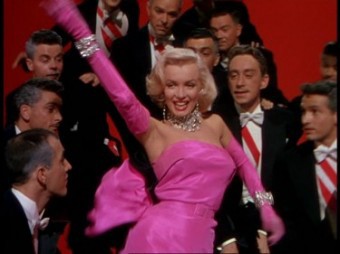
And if we are going to objectify Brad Pitt, let’s look at the salaries of Marilyn Monroe, or as she was known then, Marilyn Freakin’ Monroe.
One thing to keep in mind when discussing what actors got paid in times past is that up until the 1970s, it was very common for an actor to sign a term deal with a studio instead of negotiating compensation for each individual film. If you were an aspiring actor in, say, the 1930s, your breakthrough would most likely come while you were under contract to one of the major studios, which would pay you a fixed weekly amount. It was possible to get to the point where the actor would have the negotiating leverage, but to get to that point was a question of doing time as a bit player, playing in roles designated by the employer, until popular acclaim could be acquired.
As Monroe began to break into stardom, she was under contract to 20th Century Fox, who paid her $1,250 a week for Gentlemen Prefer Blondes (later to be memorialized as a Madonna music video ) in 1953. Three years later, her pay had increased to $100,000 for a serious turn in Bus Stop, the result of a renegotiated deal with Fox that gave her a per-picture fee plus approval rights over roles and production elements, and the right to make films for other studios. Which she did in 1961, filming The Misfits for United Artists for $250,000, a tumultuous production that would be the last completed film for both Monroe and Clark Gable. (Numbers via IMDb.)
WILLIAM POWELL
Let’s go back even further and look at the career of an actor possessing, for the time, a certain Brad Pitt-level of fame: William Powell. Powell was handsome and debonair, though he did rise to fame by playing heavies and hobos, with a career that spanned silent films into the advent of the talkies. Powell (who you surely remember from The Thin Man at least, right?) was as embroiled in the gossip headlines of his day as is Pitt. Powell was not only briefly married to Carole Lombard, he was the beau of Jean Harlow at the time of her untimely death at the age of 26. So how’d Bill Powell do?
According to William Powell: The Life and Films by Roger Bryant (a charming if not obsessive little bio), we know that in 1928 Powell was paid a total of $5,200 for both his and Paramount’s first talkie, Interference. By 1934, when The Thin Man was produced, Powell was under contract for $3,000 a week. And two years later Powell co-starred with ex-wife Lombard in My Man Godfrey (a film which introduced us to the sadly fallen-into-disuse term “forgotten man”) for $87,500.
JANE FONDA
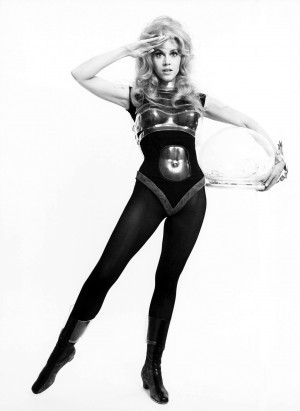
Finally, let’s take second-generation star Jane Fonda. She got into the business the conventional way as a Hollywood player, eventually garnering acclaim for Cat Ballou in 1965, but broke through as a household name after a spell in Europe with then-husband Roger Vadim, resulting in mod/sci-fi Barbarella. Of the films for which info is available (again, via IMBd), we know that: in 1973, five years after Barbarella put her on the map, she was paid $100,000 for post-hippie comedy Steelyard Blues, for Neil Simon-penned California Suite in 1978 she made $500,000, and then $2 million for 1980’s (and eventual Broadway show) Nine to Five.
All of these figures beg the question of total compensation, of course. For nearly as long as there has been a film industry actors have been enticed into making a film in exchange for a simple participation in the net profits. And more recently, an even more exclusive club than the $20 million dollar club has emerged: the first-dollar-gross club, made up of actors who are paid not a percentage of profits, but a percentage of revenue received from exhibitors. Leonardo DiCaprio got that for Matrix-come-lately Inception, which earned DiCaprio the respectable (reputed) amount of $50 million, which, at the prime rate or 3.25%, would provide, around $1.75 million per year.
Please note that the description of the ways that actors get paid is a deliberate simplification for the purposes of clarity. If understanding how it actually works is something you’d like to spend an afternoon doing, start here.
So then, four different actors, spaced relatively evenly over 70 years apart: who made/makes more? Below are the referenced film/salaries, adjusted to reflect 2011 dollars (using the Bureau of Labor Statistics invaluable consumer price index calculator).
WILLIAM POWELL
Interference (1928): $68,890.88
The Thin Man (1934): $50,719.03 per week
My Man Godfrey (1936): $1,426,092.63
MARILYN MONROE
Gentlemen Prefer Blondes (1953): $10,606.04
Bus Stop (1956): $832,886.03
The Misfits (1961): $1,894,188.96
WILLIAM HOLDEN
The Bridge on the River Kwai (1957): $8,062,099.64
ELIZABETH TAYLOR
Cleopatra (1963): $7,403,431.37
JANE FONDA
Steelyard Blues (1973): $510,236.49
California Suite (1978): $1,737,308.28
Nine to Five (1980): $5,498,665.05
BRAD PITT
Kalifornia (1993): $807,359.23
Fight Club (1999): $23,796,743.70
Mr. & Mrs. Smith (2005): $23,199,692.78
LEONARDO DICAPRIO
Inception (2011): $50,000,000
What have we learned from all of these numbers? It seems to be a pretty clear progression (given the meager sample size) — generally speaking, in 2011 dollars, actors have been getting paid more and more over time. To wit, Pitt as Tyler Durden made exactly 200 times as much as Powell did as Godfrey, although that multiplier is reduced to a little under 17 when you adjust for inflation. In fact, if you ignore the little bumps from Holden and Taylor (both of whom were paid the most ever, at the time), it seems like a steady increase until you get to the present day, when compensation is looking for the proverbial roof to shoot through. And of course we’re talking about the highest end of the business. Screen Actors Guild minimum scale has been raised pretty much in line with inflation, and is currently set at a comfortable-but-not-exorbitant $2,864 a week, which is not exactly a boatload of money, especially considering the seasonal nature of an actor’s employment.
To get paid what William Powell got paid would provide for a nice little existence. But to be paid what Leonardo gets paid? It must be literally beyond imagination. (Speaking of which, no, I still haven’t watched all of Inception.)
Brent Cox is all over the Internet.
Photo of Pitt by Joe Seer, via Shutterstock.
Cross-Eyed Opossum Closes Crossed Eyes Forever
Let’s all take a moment here to contemplate the transitory nature of existence.
"Humans like GIFs."
“Humans like GIFs. Humans like super famous 13-year-olds who don’t look or act 13. Humans like to see other humans making asses of themselves and wear very expensive dresses. HUMANS LIKE SWEEPING GENERALIZATIONS.”
— Mary H.K. Choi offers a pretty good assessment of what people are on about.
Breasts Slapped
“For those women who may seek breast augmentation but would rather not undergo surgery, there is an alternative in the form of a new craze that is slapping its way silly across Thailand. The government of Thailand is promoting the controversial technique known as ‘breast-slapping’ which involves kneading, massaging and hitting breasts as well as the buttocks in order to firm the rear.”
Women Are Better Than Men At Not Being Ill

In a finding that will not exactly come as news to anyone who has ever dealt with a man who lies on the couch and moans “I’m siiiiiiick,” it turns out that women are “genetically programmed to better resist infections and cancer, and also have a back-up system for fighting disease.” Really, once you guys figure out how to make babies on your own, what are you even going to need us for? Opening jars?
Photo by AlikeYou, via Shutterstock
Today is Rick Scott's First Killing!

Technically, it’s Florida’s monstrous, terrible governor Rick Scott’s second killing, if you count all the money he made when he was forced out of his own company, as it made the “largest fraud settlement in U.S. history,” as it had systematically defrauded the government of millions of dollars. But it’s his first killing of a human being! Is everyone terribly upset about the death, six hours from now, of Manuel Valle? Actually, probably yes: even the makers of pentobarbital have written to Rick Scott to ask him not to kill Manuel Valle with their drug. But the victim’s family is really very eager for someone to die so that they can feel better.
You Wouldn't Like Pat Kiernan When He's Angry (Or Would You)
Damn you, M&M; Store. I’m not paying $44 for $8 worth of chocolate!
http://t.co/MMN1y2BmWed Sep 28 12:44:34 via bitly
Pat Kiernan
patkiernan
NY1 morning hero Pat Kiernan appears to be auditioning for retiring ’60 Minutes’ rambler Andy Rooney’s job. He’s REAL MAD at the M&Ms; store in Times Square. (I mean, who isn’t, sure.) What’s the old proverb? “Something something give a man a blog and he’ll have things to rage about for life.”
How To Write A Love Poem
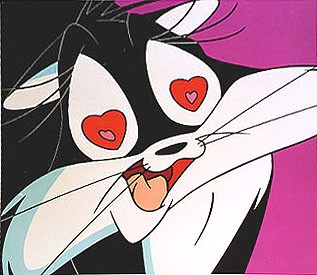
Poetry occupies a cultural space in Contemporary American Society somewhere between Tap Dancing and Ventriloquism. People are certainly aware that poetry exists, but this awareness comes upon them only vaguely and in passing moments. During commercials, mostly, which feature corporate poetry. When people think of a poet, perhaps they imagine the finger-snapping beret-wearing beatnik. Or the slammy mike-wielding poet-ranter. Both proud poetic traditions. But most people who write poetry are people just like yourself. Scruffy, broken wordpals. In the age of Twitter, casual word-shaping may be at its all-time high worldwide. As we attempt to fit all the meaning and emotion we can into a few short lines, no doubt Maya Angelou and Walt Whitman and Bashō are looking down from heaven and smiling. (I know Maya Angelou isn’t dead. She just lives in heaven.)
Love poetry has, of course, been with us since the beginning of time. Lame pick-up lines were passé even in Mesozoic times; we diminish ourselves with cheap dating gimmickry. And who would want to woo anyone who could be gotten so cheaply anyway? It’s the chase that’s the fun — and the poem is the map you use! To get to Someone’s Soul! (Excited trumpets!)
When is the right time in a relationship to present someone with a poem? A good question. The line between creepy and romantic is ever shifting. Some people might like a poem written about them at first, and then later come to find it creepy and taser you. Others might, upon first reading, feel creeped out and then later come to love the poem you wrote. You never know. Love makes us put ourselves out there in crazy ways; it’s a roller coaster except there are no safety restraints. You could find yourself floating or smashed on the boardwalk like a heel-crushed hotdog. That’s the fun of it! It starts as a funny feeling in the stomach and then quickly goes on to flood the brain. Soon we’re constantly thinking about them, wondering what they look like without pants on, trying to remember their schedule at the yoga place. Poets actually know more about longing than they do about love. Poets fall in love with other people’s wives, people who don’t love them back. They’re human, in other words; and humans weren’t built for happiness. They were built for dissatisfaction and yearning.
So, what’s your story? For whom do you yearn? Could be your parole officer. Or the guy you hired to kill your ex. We generally are attracted to complication: people who it might be impossible to pursue. As the great John Wieners wrote, “The poem does not lie to us. We lie under its law.” I quote that a lot, because it’s the most important thing a poem can do: communicate energy and Capital T Truth to the reader. In this case to someone you think is pretty special. So make your Truth sound pretty good.
***
The first step is to stare at a blank piece of paper for a while. This is actually a helpful step. Like the way Michelangelo stared at a block of stone for a while and then figured out that there was a man with a strangely small penis inside of it. Or Jackson Pollock would stare at a blank canvas and realize that a bunch of random painting droppings and swirls were underneath, waiting to be dripped out. Or Eve Ensler saw an empty stage and a microphone and then decided that she wanted to talk about her vagina. What does the blank page tell us? A lot. It’s a mirror of our own minds. Especially, in my case, when I have spilled coffee on it.
How does one proceed from this blank page? Hopefully, you don’t stare at the page all day and go insane, and then start committing crimes around town under the alias of “The Blank Page.” That would be a terrible outcome. And you’d probably end up a Batwoman villain. There are easy ways to get started writing a poem. And easy is the way to go. No one wants a really tangled and complicated love poem written about himself. Dante wrote about following Beatrice through Heaven, Hell and Purgatory, and he still never actually got to be with her. But they didn’t have OkCupid then, so it’s understandable. Plus, Beatrice was, like, 13, and who knows what 13-year-old girls like? Bieber, I guess. Please don’t send love poems to 13-year-old girls. Unless you are 13.
One way to get started with your love poem is to use the recipient’s name. Names are good. Find out what his or her name is and then write it down the page like so:
J
I
M
T
H
E
H
A
M
M
E
R
B
E
H
R
L
E
There is probably a word for this kind of poem. Acrostic. I just looked that up. That is a good way to start a poem! And it shows someone that you know his name. Which is a good thing to know. This is a great starting point. So in the first line you could start with a “J” word.
Just to let you know
Okay! You’re building up to something. So far so good. Don’t use italics to emphasize certain words, though. People use italics too much in poems to mean This is really, really deep. This is so breathlessly important. So skip the italics.
Just to let you know
I think you are pretty cool
That’s good! Building on the “I”! Bringing yourself into it. Being direct! That’s good, because it takes some people a little while to get the gist of something. Just get right to it.
Just to let you now
I think you are pretty cool
Mostly because of your ass
Humor! Excellent. You may not want to mention someone’s butt in the first stanza, or maybe at all. It just happens to be my finest feature, and I’m always glad when people have opinions about it. Some people are weird about that, but whatever. Safe things to mention when you don’t know somebody that well, or you just know him from work or following him around on the N train or whatever, are hair, eyes and elbows. Mouths, bellybuttons, noses, ears, coccyges — anything that can be used during some kind of sex act — can be approached only metaphorically and with the greatest of caution when you’re writing for people who do not already know that you love them.
So let’s change “ass” for “eyes,” which, on me, are also amazing. A kind of hazelnut wonderland of depth and swirling glint. I also have a very deep sexy voice. Those are my only good qualities, I’m a total Round Mound of Rebound otherwise. But this brings me to an important point: use the things you like about someone in your poem. Avoid criticism. I know that guy in the purple hat taught you to play on the insecurities of people to get them to love you. But, c’mon. You don’t have to be an asshole to get laid or love. You just need to be you. Because, as the amazing Elizabeth Bishop once wrote, “Somebody loves us all.” Who knows why they do, but let’s not complicate it.
So you can fill out the rest of that acrostic with all kinds of things you like about me and how I make you feel.
But even though you are a fatass
Everything about you is great.
Hooray for you and the way you make me feel.
Radiant, alive, like a baby bunny in honey.
Listening to your sexy voice while your hazelnut
Eyes swallow me up like a McNugget.
The poem doesn’t need to be something that will be chiseled into the side of the building. It just has to be from you. Heartfelt is a good thing to be. Keep it simple. I think sometimes we imagine that we have to say a lot to get people to like us. But remember that scene with Tom Cruise where he had her at hello? Most people are aching for love, dying to be loved and perhaps only seconds away from leaping into your arms. You just never know. Fancy poems might not get the job done. And don’t spend too much time agonizing over the thing. I wrote that part above in a few minutes, and I don’t even love myself at all. I can barely stand myself. Imagine how inspired you might feel when you’re really crazy about someone? And it’s a bad idea to attempt a poem unless you really do feel something about someone. If you’ve been with someone a long time and you think writing a poem might rekindle things for a while, go for it. Just be careful not to write a Break-up Poem, where you unconsciously bring up all the things you despise about someone.
But even though you never wash the dishes and
Everything stinks because the garbage is piled up
Hooray for you and the way you make me feel!
Raunchy, covered in our waste products.
Leery of your every move.
Expecting to call a divorce attorney.
Think about that William Carlos Williams’ poem about the plums he left on the fridge for Elsie. Elsie might have said, oh, what a nice poem. But she also thought, hey, those were my plums! You dick! What am I gonna eat? But Williams does teach us to keep it short: Brevity is key in poems! If you go on and on, like I am doing here, chances are the poem’s recipient will fall asleep. Or not read your poem. A few short lines letting them know you want to say nice things to them and do nice things for them. And not, like, eat all their plums. What an asshole.
***
If the acrostic is not the thing for you, if the person’s name is like Xigglebewl or something, there are other delightful poetic forms you can use. NOT THE SESTINA. Those always come out forced and ridiculous and there are all these repeating words and it just never fucking works. All sestinas are terrible — name one that isn’t. Haikus, while they are excellent for football picks, are maybe too short. You always want to give love poem recipients a little meat to chew on, even when they are beautiful vegans lit from the inside by paramecium and gluten.
The sonnet is a delightful form. You can think of it like it’s a puzzle. A crossword or a sudoku. You can read all the rules. Although rhyming is frowned upon in many snobby circles of elitist poets, you can rhyme if you want to. That’s what the Modernists fought all their battles for: the right for poets of this age and every one going forward to do whatever the hell they want. Rhyme, don’t rhyme! You don’t need to be trendy. Anyway, the trendy thing in poetry these days is to have a twin that also writes poems, so, unless you have a twin, that’s out. And don’t worry about it. Love makes us all act like awkward nerds. Which in turn makes us adorable and loveable.
My favorite way to cheat and write sonnets is by stealing the rhyming end words of some famous Shakespeare poem. They’re all online; you can just copy and paste them into a Google doc. You don’t need to adhere to the exact words and rhyme scheme, it just gives you a starting point.
view
mend
due
commend
crown’d
own
confound
shown
mind
deeds
kind
weeds
show
grow
These are the end words from Shakespeare’s Sonnet 69. They’re actually not so hot, but they give us something to work with. “Commend” and “mend” are practically the same word, so I’ll probably sub in the words “tumblr” and “humbler.” Or “Facebook” and “gobbledygook.” There are lots of rhyming dictionaries online. So, for this poem, maybe I will write about the cute lady from Marlowe & Daughters, the place I get sausages. I mean, they’re all cute in there. And their sausages are great. But you get the picture.
At the sausage place I come to view
OK. That’s something, At least it’s a start. Then I start counting on my fingers. I guess some people can count syllables in their heads, but I can’t. I am always counting on my fingers. And I came up one syllable short. Don’t panic!
At the sausage place I am thrilled to view
Not bad! And ten syllables! Pretty good. You can get all iambic and whatever, if you want your poem to sound old-fashioned or buh dum buh dum buh dum buh dum buh dum. But I really just want the pretty lady from the Meat Store to like the poem and like me. OK:
At the sausage place I am thrilled to view
A woman I hope has a cool tumblr.
With all the world’s wild beauty she’s imbued
In her glowing presence I feel humbler.
I think “imbued” might actually mean “bleeding.” So I have to look that up. Nope. It just means she’s dipped in beauty, that it permeates her being. Not too bad. Better than “due.” I try to keep the poem sounding like me, i.e., I make dumb jokes and generally evince low self-esteem. I know women are supposed to love fake confidence, but no one really feels confident all the time. Especially not when writing poems addressed to strangers in butcher shops. So the poem is me, even though I have punked Shakespeare a little. Stealing a little from other poets is a part of all poetry, but now that things can be Googled, you have to be careful. Stealing a little is an homage or an allusion. Stealing a lot is, you’re a thief and a fraud. Not very sexxy.
I would love to see her page on Facebook
I’d click ‘like’ over everything that’s there.
I speak only in odd gobbledygook
When I’m ordering sausage up in here.
“There” and “here” aren’t great together. But the rest is charming enough. And the keys to a great sonnet are having a great beginning and a great ending. No one remembers the middle — they’re too busy tearing off their clothes (and, hopefully, yours as well).
I bloom like a dandelion in my mind
Every Sunday morning agog and sweet.
I know I’ll stop by and you’ll be so kind
While I order delicious breakfast meats.
I changed “sweetly indeed” to “agog and sweet” after I wrote the “delicious breakfast meats” line. Slant rhyme is good, too. But nice, full rhymes are also great. And it took but a little poeting to move it around. But now for the big finale. How will I complete this masterpiece to meats and pretty ladies?
Sometime we should cuddle and watch “Mr. Show”
Hope this doesn’t make me seem too psycho
When you’re writing a poem to introduce yourself to someone you like, you probably should avoid the word “psycho.” On the other hand, you must take bold measures to get the life you want in this world. Or else be rich or sexy. I’m not rich or sexy; I have to go by grit and wit and hope for the best. Which isn’t to say that you have to make your poem drip with self-deprecating humor. Just let it be you; put yourself out there a little. Even if you end up getting stabbed through the heart with a plastic salad spork, at least you tried.
Now, for those people who have been together a while, love poems are nice because you gotta keep things fresh. Or else they’ll sleep with their shrink or something. Poems are good because they show effort; instead of just sexting or something, you actually spent a little time trying to make something that might make the other person feel special and appreciated. But be very careful about what you put in your love poem! It will be parsed for any and all possible meanings. If you use the poem to promise to take out the trash more often, They Will Remind You of The Poem to take out the trash when you forget. So easy on the promises and commitments. You’re not writing your marriage vows here, just something sweet that makes someone else feel appreciated and desired. Those are nice things to feel (I have heard).
Another resource for you might be The Awl’s own poetry section. Mark Bibbins collects a lot of different voices there; if you come across some poems you like, try to copy them until you make them your own. Prose poems, weird poems, traditional poems. Poetry is pretty much whatever you want to call a poem. And poetry is more than just not-a-cartoon on a page of The New Yorker. There’s some excellent stuff out there. And you don’t have to only admire what other people do; you can write poems, too, even if you’re too shy to ever show anyone. It’s not about being judged or getting a genius grant or being remembered for all eternity. Writing a poem could just be about making other people think about art for a second instead of, I don’t know, Work and Money and Troubles. The world is a little better when you believe in poetry, too. Even if you never get a genius grant, you still might get laid or loved or even liked. And you might make someone’s day. And get an invitation out for drinks. It’s nice to be liked and to have poems written about you. Especially is the poems are interesting and alluring. How many poems dedicated to you about how great you are ended up in your inbox today? Don’t you wish there was at least one? Yeah. So do I.
Jim Behrle tweets at @behrle for your possible amusement.
Remote Bendable
“A Japanese company has built a remote that you can bend and twist to control your TV,” but I don’t know, that seems like so much more work than pressing buttons and stuff.
Ten Trends Not Currently Trending On Twitter
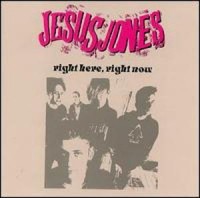
1. Naming baby girls “Layla,” “Leila” or “Lila.”
2. Menus written in chalk on walls of restaurants
3. Conversations about how mosquitos seem to be around longer this year
4. INXS songs on the radio
6. Machines shaped like animals
7. Unironic usage of the word “pal”
8. Skirt steak
9. Police brutality
10. Incorrect predictions of rain
(Whoops. That last one sort of is.)
